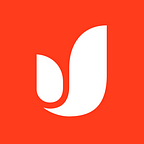Our “Secret” Formula to Online Workshops — Fireart Studio
Are you thinking of a new product, but have many questions about how to start? We can navigate you through the entire process by running a range of online Design & Development workshops. In this article, Jonasz Kujawski, Senior Design Consultant and Team Leader at Fireart, shares all ins and outs of online workshops we run with our clients during product development.
We have customized Google Design Sprint into a more convenient approach for our clients that has already brought awesome project outcomes. It allowed us to optimize the process, set a closer connection between the team and clients, understand the client’s vision more deeply, and make unpredictable conclusions together.
Especially in these apocalyptic times, we have realized how powerful and necessary online workshops are. Here we’d like to share an appetizer of our approach with you. Let’s take a closer look at how we run online workshops at Fireart Studio!
Breaking The Ice
First of all, we want to build bridges between our team and clients, so we try to match each other on a human level and then connect dots in product aspects. That’s why we start our workshops with some “ice-breaking” exercises (our smile yoga) to create a positive vibe and to be on the same wavelength.
Of course, every single client has different views, so we prepare a set of unique models for each one. This approach allows us to deliver more value to our clients, show them the significant role of workshops, open their minds, and take the project to a different level of abstract thinking.
Who should be involved in the project on the client’s side? Like in Noah’s ark, we need a representative of every species from your company. Whether it is a technical, marketing, design, or business professional, we can combine the valuable expertise of each of them and mix it into one powerful knowledge stream.
Day 1 — Miro Day
The first day is divided into design and development phases. We focus on identifying the value proposition and strengths behind the product and enterprise, as well as investigating the client’s business environment and stakeholders. Everything happens in Miro, the best collaboration tool for such workflow.
Let’s make a real-quick walkthrough in Miro.
And that’s just beginning! In order to extract as much knowledge as possible from this day, we use the following techniques:
- Business Model Canvas
- Personas Exercise — Reviewing Target Audience
- Storyboard & User Stories with Prioritization
- User Journeys
- Data Audit
- Identifying UX Gaps
- Brainwriting
- Crazy 8’s
and many more.
We spend the end of this pleasant and productive day designing the wireframes. Normally, we deliver them by noon the next day as the material for analysis.
Day 2 — Figma Day
After presenting the prototypes in Figma, we move on to the extremely insightful phase — the joint creation of further design stages in Figma live. It helps us take a new look at the project and explore even more aspects of UX. In a few hours, we achieve effects that would last several days with a conventional iteration.
This day comes with the next phases:
- Prototyping Phase
- Feedback Session
- Validating with Users and Summary.
We end the workshop by setting the main user flow that helps us create a much better idea and logic of the product. After that, we start working on mockups at light speed. So in a practical way, everything looks like in the image below: a couple of wireframe alternatives delivered in a couple of hours.
The first four screens are alternatives provided in a few hours. We present some of our recommendations and, together with the client, decide on the best usage of the features. These insights serve as a basis for creating an initial set of wireframes with classical iterations that typically takes days, not hours. Now, we have everything needed to proceed with the next UX design steps, quickly validate concepts, and show us edge-cases.
Once Again About The Benefits
Well, could we say more? Here we present just some of the most significant benefits of home-made Fireart workshops:
- Identifying cases and generating new ideas
- Miro & Figma are like a multiplayer game — easy and fun to use
- Time-saving and budget-saving
- A better understanding of the product scope, tech stack
- Quick validation by a clickable prototype
- Better planning of development, project estimations, and next steps of an agile project
- Supporting development-oriented aspects — System architecture, Tech stack selection, Backlog preparation.
And one more thing… We provide a comprehensive skillset and lots of empathy to help our client’s ideas grow. Our multidisciplinary Team — Tech Lead (Michał), one of our Product Designer, and also me as The Facilitator will do our best to take your project to the next level.
By the way, below it’s the digital version of myself. If you want to meet us online, don’t wait! We’re here to help.
So… If you are thinking about creating a product and still have some uncertainties, let’s connect for a tea and dispel all your project-related doubts! It’s simple like this:
See you at our workshops!
Yours, Fireart Team
Originally published at https://fireart.studio on December 11, 2020.
